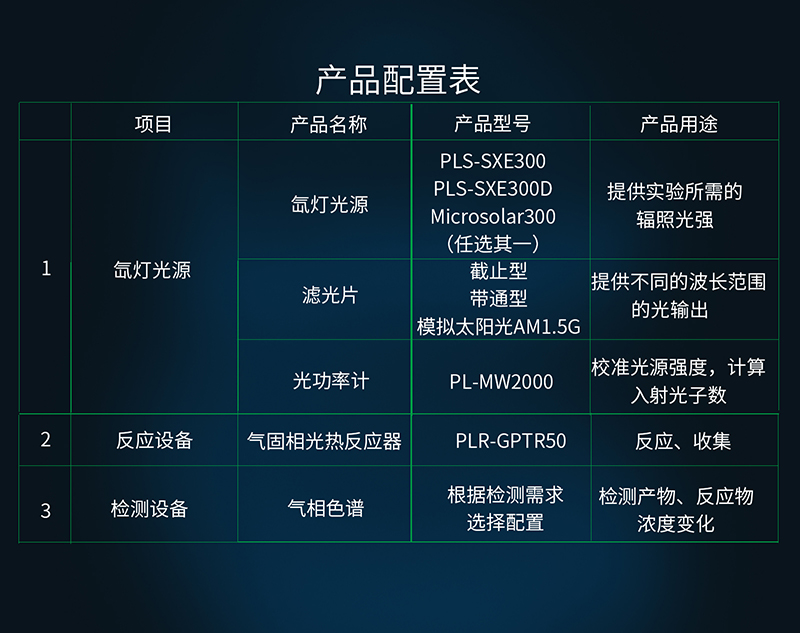During the process of photocatalysis, the presence of a thermal catalytic reactor is inevitable. Especially under the irradiation of intense light sources, when materials absorb incident light, a portion of it is transformed into heat, causing the material to heat up and thereby influencing the performance of the catalyst. Therefore, some researchers have focused on studying the catalytic activity of catalysts under both light and thermal energy fields.
In photothermal experiments, what needs to be considered is whether "heat" is achieved through externally applied heating or through "photoinduced heating". For different application scenarios, our company proposes the following solutions.
Configuration One: Light Source + Photothermal Catalytic Reactor + Special Gas Chromatograph
Configuration Two: Light Source + Photothermal Synergistic Fixed-Bed Reactor + Special Gas Chromatograph
Configuration Three: Light Source + Multi-Functional Photochemical Reactor + Special Gas Chromatograph
Configuration Four: Light Source + High-Temperature High-Pressure Photocatalytic Reaction System + Special Gas Chromatograph
Configuration Five: Light Source + Gas-Solid Photothermal Reactor + Special Gas Chromatograph
Configuration Six: Light Source + 6A + In-Situ Temperature Measurement Gas-Solid Photothermal Catalytic Reactor + Special Gas Chromatograph

Advantages of the Solution
1. This reactor is an upgraded version of photothermal catalysis 2.0 jointly developed with Professor Zhang Tierui.
2. Infrared temperature measurement is used to measure the surface temperature of the catalyst in real time; both domestic and imported infrared temperature measurement solutions are available; temperature measurement resolution is ±0.1 ℃; temperature control stability is ±1 ℃.
3. Multiple heating methods can be selected: electric heating, photothermal heating, and photoelectrochemical coupling heating.
4. Multiple reaction phases are available: gas-solid phase, gas-liquid-solid phase.
5. The catalyst is close to the light source, experiencing strong light intensity.
6. Electric heating is used, and the temperature can reach 600 ℃.
7. The catalyst is exposed to a large irradiation area, and the gas flow rate is 60 mL/min.
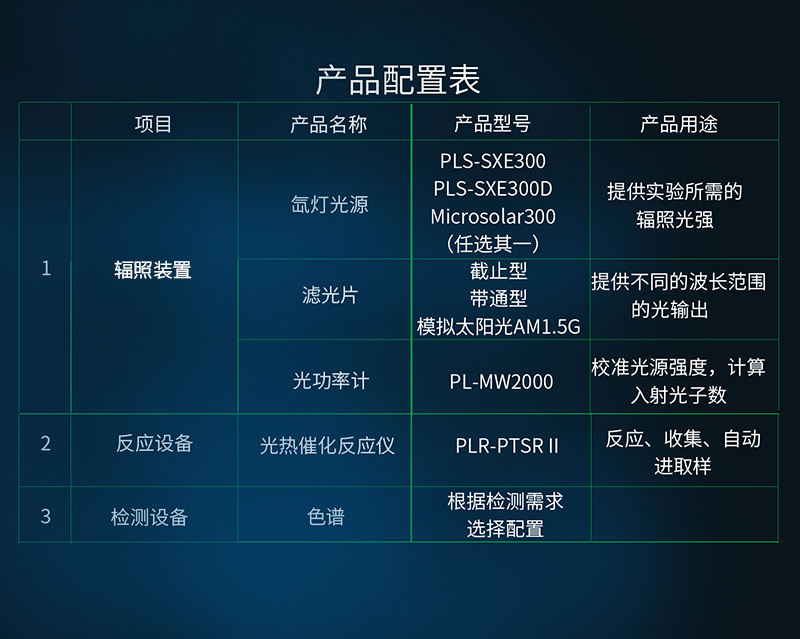

Advantages of the Solution
1. Multiple reaction phases are available: liquid-solid, gas-solid, gas-liquid-solid.
2. Temperature control range can reach 1000 ℃.
3. Gas flow rate can reach 100 mL/min.
4. High pressure resistance can reach 10 MPa.
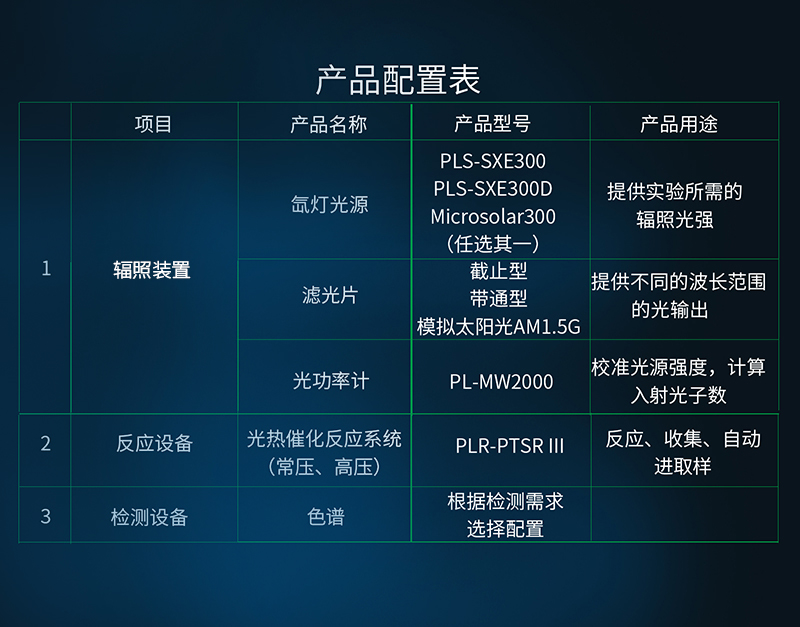

Advantages of the Solution
1. Multifunctional, accommodating various photocatalytic reactions, including:
Radiation Modes: Side Irradiation, Top Irradiation, Multi-Functional
Medium Phases: Gas-Liquid-Solid Multiphase Reaction, Gas-Solid, Liquid-Solid, Gas-Liquid-Solid
Medium Phases: Gas-liquid-solid multiphase reactions, gas-solid, liquid-solid, gas-liquid-solid
Reaction Types: Photocatalysis, photochemistry, photoelectrocatalysis
2. Implement negative pressure sampling. By using a vacuum pump to evacuate the quantification loop, rapid sampling is achieved in a closed system. Accurate sampling is realized through the pressure difference between the quantification loop and the sampling end, following the principle of 6A.
3. Implement online automatic sampling under certain pressure conditions. Through an automatic valve assembly, the complex depressurization operation and the impact of overall system depressurization on the reaction process are avoided.
4. The reactor is equipped with a unique pressure-resistant glass lining, making it compatible with various photochemical or photoelectrochemical reaction tests in inert systems.
5. Separate temperature control and heating are applied to the sampling valve assembly to avoid inaccuracies caused by condensation of high-temperature gases. The sampling valve assembly and the reaction vessel are independently temperature-controlled, with the valve assembly temperature higher than the reaction temperature, preventing gas condensation due to temperature differences.
6. The phenomenon of thermal runaway refers to a significant increase in temperature in certain parts or the entire reactor when it operates in an unstable state (with multiple phases present) and experiences minor perturbations in operating parameters. The device employs a thermal switch to ensure temperature control safety. Through dual temperature control and triple heating methods, the entire system's temperature control is maintained within a reasonable range, preventing thermal runaway and ensuring experimental safety.
7. It can accommodate all mainstream gas chromatography, mass spectrometry, and other detection devices available on the market. Simple modifications enable their integration, without affecting the normal use of the original detection equipment.
8. Achieve integrated design for magnetic stirring, temperature control, reaction sampling, and reaction vessel. All parameters are set via the device's automatic touch screen interface, making operation simple without the need for a separate industrial control computer.
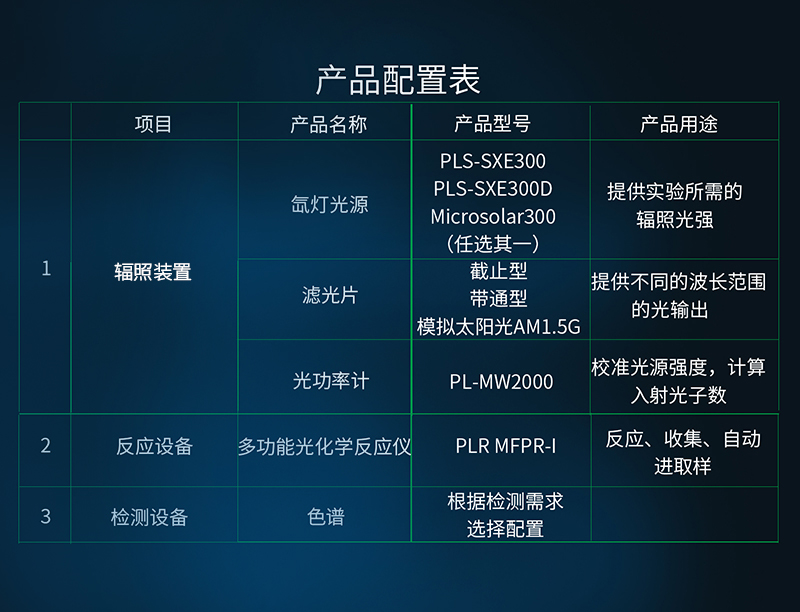

Advantages of the Solution
1. Achieve differential photocatalysis under high temperature and pressure with lower gas flow rates;
2. The system's maximum pressure resistance can reach 10 MPa;
3. The system's highest reaction temperature can reach 380 ℃;
4. The system has secondary steady flow valves and secondary steady pressure valves for control, with three air inlets that can be controlled separately;
5. The system features an integrated safety protection box design, equipped with a safety relief valve, ensuring experimental safety.
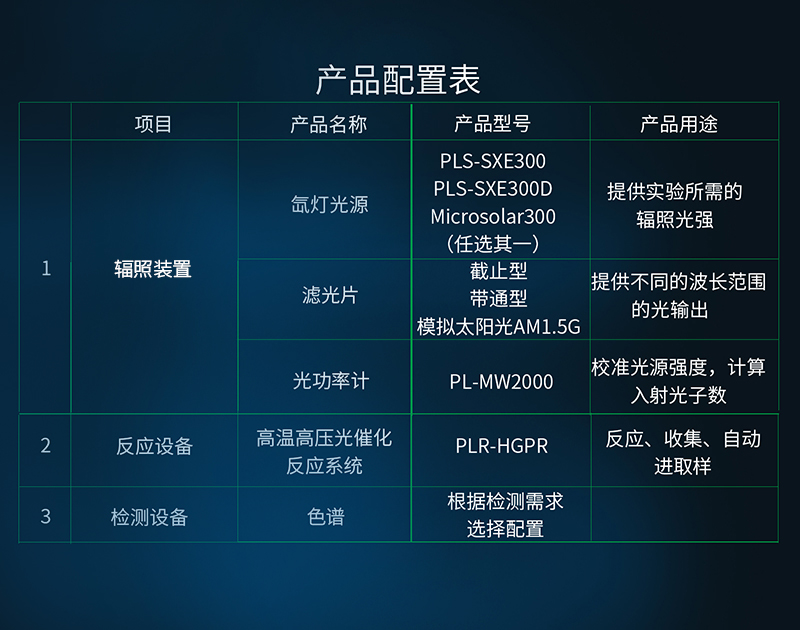

Advantages of the Solution
1. Temperature control achieved through electric heating, with a maximum temperature of 300 ℃;
2. Large optical window area, with the light source outlet located close to the optical window, resulting in high irradiation intensity;
3. Compact size, occupying minimal space;
4. A product by Professor Zhang Tierui.
